The Aircraft Manufacturing Company Limited (Airco) was an early British aircraft manufacturer. Established during 1912, it grew rapidly during the First World War, referring to itself as the largest aircraft company in the world by 1918.
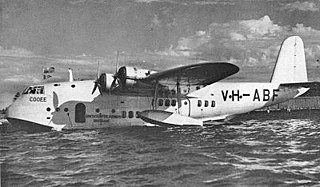
A flying boat is a type of fixed-winged seaplane with a hull, allowing it to land on water. It differs from a floatplane in that a flying boat's fuselage is purpose-designed for floatation and contains a hull, while floatplanes rely on fuselage-mounted floats for buoyancy. Though the fuselage provides buoyancy, flying boats may also utilize under-wing floats or wing-like projections extending from the fuselage for additional stability. Flying boats often lack landing gear which would allow them to land on the ground, though many modern designs are convertible amphibious aircraft which may switch between landing gear and flotation mode for water or ground takeoff and landing.

A seaplane is a powered fixed-wing aircraft capable of taking off and landing (alighting) on water. Seaplanes are usually divided into two categories based on their technological characteristics: floatplanes and flying boats; the latter are generally far larger and can carry far more. Seaplanes that can also take off and land on airfields are in a subclass called amphibious aircraft, or amphibians. Seaplanes were sometimes called hydroplanes, but currently this term applies instead to motor-powered watercraft that use the technique of hydrodynamic lift to skim the surface of water when running at speed.

Curtiss Aeroplane and Motor Company was an American aircraft manufacturer originally founded by Glenn Hammond Curtiss and Augustus Moore Herring in Hammondsport, New York. After significant commercial success in its first decades, it merged with the Wright Aeronautical to form Curtiss-Wright Corporation.

The Naval Aircraft Factory (NAF) was established by the United States Navy in 1918 in Philadelphia, Pennsylvania. It was created to help solve aircraft supply issues which faced the Navy Department upon the entry of the U.S. into World War I. The US Army’s requirements for an enormous quantity of airplanes created a decided lack of interest among aircraft manufacturers in the Navy's requirements for a comparatively small quantity of aircraft. The Navy Department concluded that it was necessary to build a Navy-owned aircraft factory in order to assure a part of its aircraft supply; to obtain cost data for the department’s guidance in its dealings with private manufacturers; and to have under its own control a factory capable of producing experimental designs.

Aeronca, contracted from Aeronautical Corporation of America, located in Middletown, Ohio, is a US manufacturer of engine components and airframe structures for commercial aviation and the defense industry, and a former aircraft manufacturer. From 1928 to 1951, the company was a major producer of general aviation aircraft, and also produced the engines for some of their early designs.

The Hall XPTBH was a prototype American twin-engined seaplane, submitted to the United States Navy by the Hall Aluminum Aircraft Corporation in response to a 1934 specification for new bomber and scout aircraft. Constructed in an innovative fashion that made extensive use of aluminum, the XPTBH proved successful in flight testing, but failed to win favor with the U.S. Navy. No production contract was awarded, and the single aircraft built served in experimental duties before its destruction in a hurricane during 1938.

The Burgess Company was a U.S. airplane manufacturer between 1910 and 1918.

Robert George Fowler was an early aviation pioneer and was the first person to make a west-to-east transcontinental flight in stages.
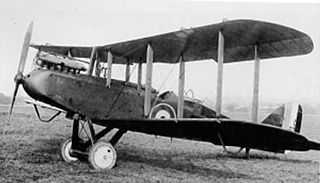
The Airco DH.9 – also known after 1920 as the de Havilland DH.9 – was a British single-engined biplane bomber developed and deployed during the First World War.

Atlantic Aircraft Corporation, also known as Fokker-America and Atlantic-Fokker, was a US subsidiary of the Dutch Fokker company, responsible for sales and information about Fokker imports, and eventually constructing various Fokker designs.
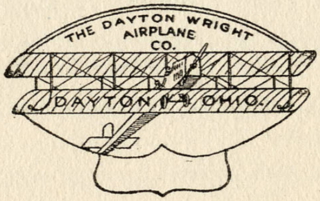
The Dayton-Wright Company was formed in 1917, on the declaration of war between the United States and Germany, by a group of Ohio investors that included Charles F. Kettering and Edward A. Deeds of Dayton Engineering Laboratories Company (DELCO). Orville Wright lent his name and served as a consultant, but other than that, the location of one of its three factories in the original Wright Company factory buildings in Dayton, Ohio was the only connection to the Wright brothers. In addition to plant 3, Dayton-Wright operated factories in Moraine and Miamisburg, Ohio. During the course of the war, Dayton-Wright produced about 3,000 DH-4s, as well as 400 Standard SJ-1 trainers. The company was hurt by the reputation of the DH-4s it produced as "flaming coffins" or "flying coffins", although they were not in reality more subject to catching fire than other aircraft, and by scandals it faced.
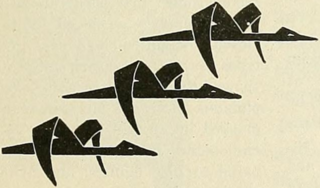
Monocoupe Aircraft was a manufacturer of light airplanes originally produced in the late 1920s and 30s. They introduced relatively inexpensive, compact, and sporty aircraft in an era of large, maintenance intensive, open-cockpit biplanes, and the Monocoupe series was one of the first economical, closed-cabin, two-seat, light aircraft in the United States. As a result, the Monocoupe soon became a successful brand.
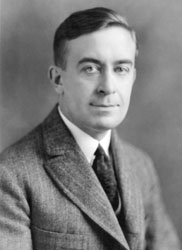
Alfred Victor Verville was an American aviation pioneer and aircraft designer who contributed to civilian and military aviation. During his forty-seven years in the aviation industry, he was responsible for the design and development of nearly twenty commercial and military airplanes. Verville is known for designing flying boats, military racing airplanes, and a series of commercial cabin airplanes. His planes were awarded with the Pulitzer Speed Classic Trophy in 1920 and 1924.

Étienne Dormoy was an aeronautical engineer and a designer of aircraft.
The L-W-F XNBS-2 was a planned 1920s biplane night bomber designed by the Lowe, Willard & Fowler Engineering Company for the United States Army Air Service.

Haskelite is the brand name of a plywood, once made by the Michigan-based Haskelite Manufacturing Corporation. It was made from waterproof glue developed by Henry L. Haskell. The moldable plywood was originally called Ser-O-Ply. It was used in the construction of various vehicles including military tanks, boats, airplanes, buses, trucks, and automobiles. The plywood was manufactured with different characteristics depending on particular needs and then given a brand name.

The LWF model V is an American two-seat reconnaissance and training biplane built during World War One, and used for a short period afterwards. A variant specially built to test the Liberty L-12 aircraft engine, the model F, was the first aircraft to fly powered by that widely used engine.

The L-W-F Model H Owl was a large American twin-boom trimotor biplane designed and built by LWF Engineering as a mail plane in 1920, but after being rejected for that role, the single prototype was sold to the United States Army Air Service for evaluation as a bomber but failed to secure any orders.


















